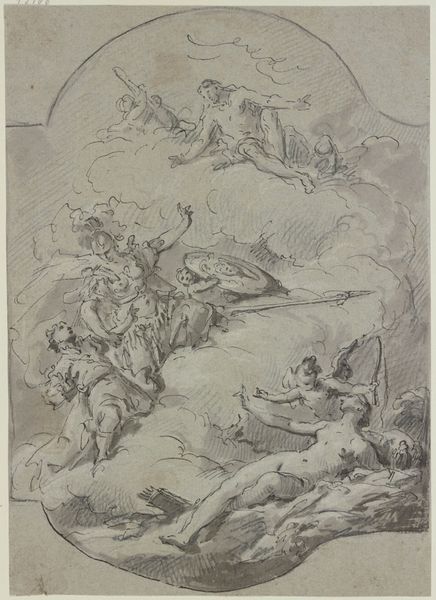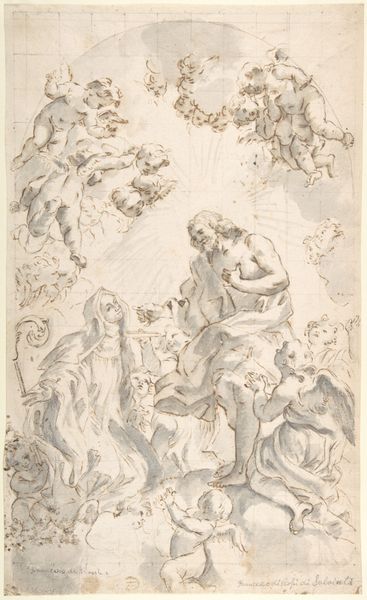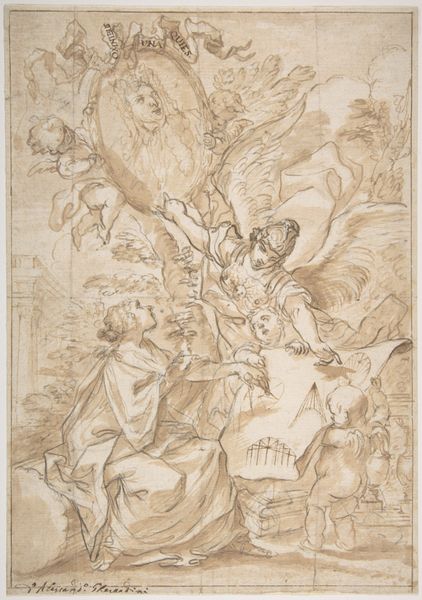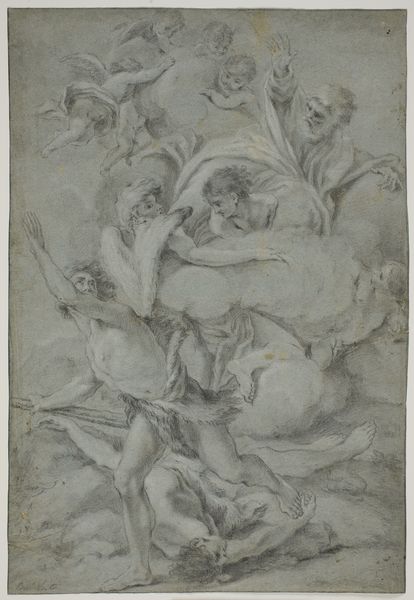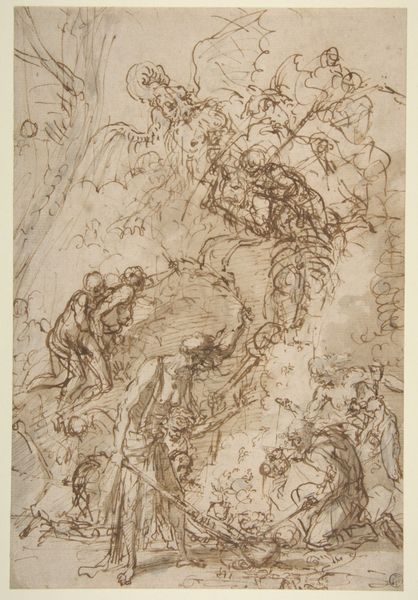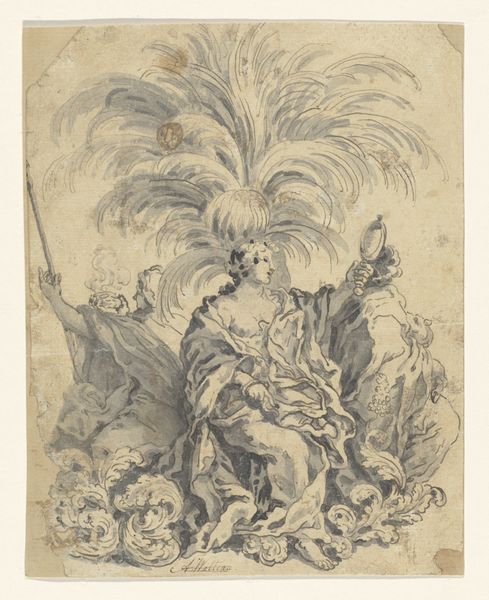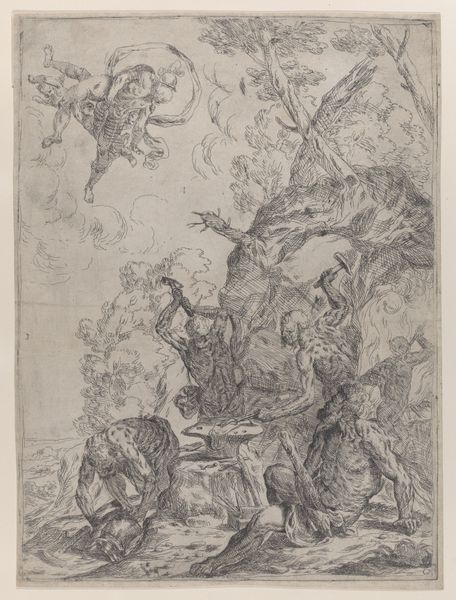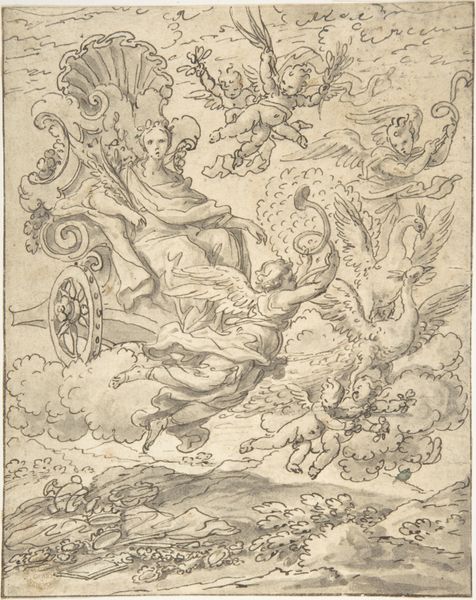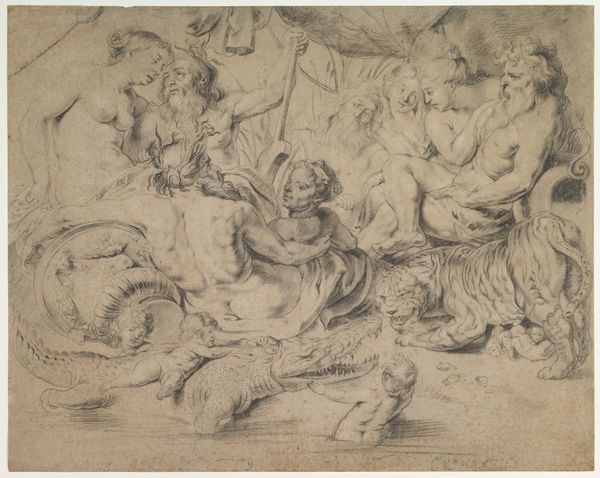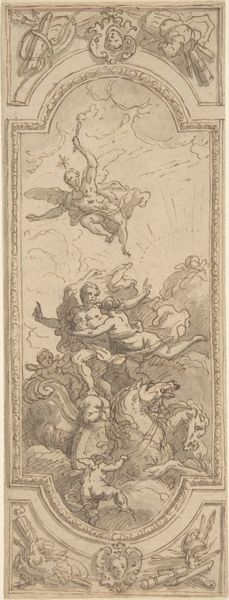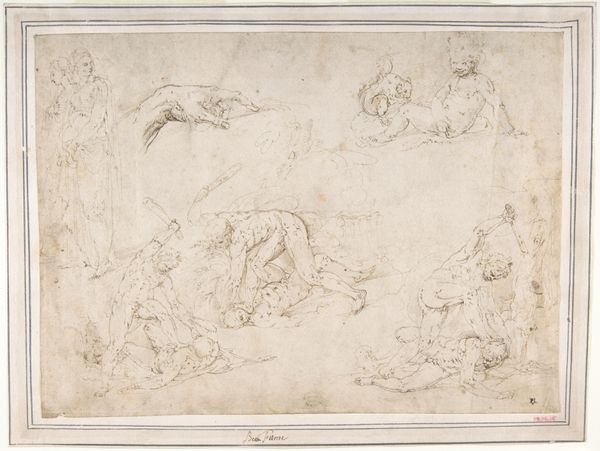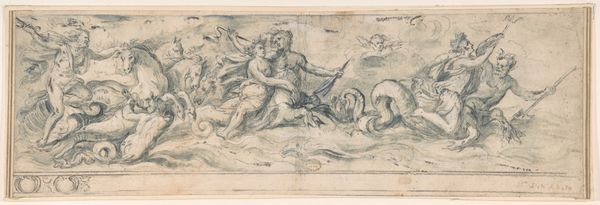
drawing, print, engraving
#
drawing
#
allegory
#
baroque
# print
#
landscape
#
figuration
#
line
#
history-painting
#
academic-art
#
nude
#
engraving
Dimensions: Sheet (Trimmed): 10 7/16 × 7 5/8 in. (26.5 × 19.4 cm)
Copyright: Public Domain
Giuseppe Diamantini created this print, "Dido on the Funeral Pyre," sometime in the 17th century, using etching. The etched lines define the contours of Dido, the Queen of Carthage from Virgil’s Aeneid, as she perishes on a pyre. The fine lines create an ethereal quality, enhancing the drama. Look closely, and you'll see how Diamantini used hatching and cross-hatching to build tone and suggest depth. Etching allows for expressive freedom. The artist draws an image on a wax-coated metal plate, which is then dipped in acid. The acid bites into the exposed lines, leaving an image which can then be inked and printed. This process is often seen as a democratic approach to art making, as it allows for multiple impressions, and is not unique like a painting or drawing. Prints made art more accessible, reflecting the changing economics of the art world. In this context, Dido’s tragic end becomes part of a larger story, one that resonates with both the elite and broader audiences. It prompts us to consider the relationship between artistic skill, material production, and the circulation of ideas in society.
Comments
No comments
Be the first to comment and join the conversation on the ultimate creative platform.
